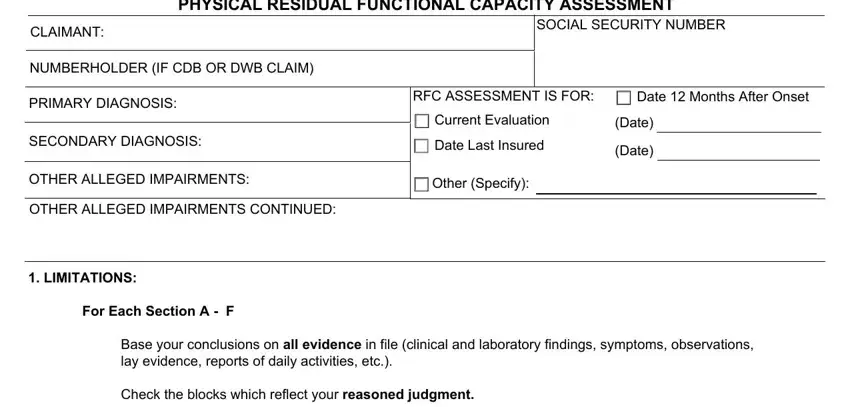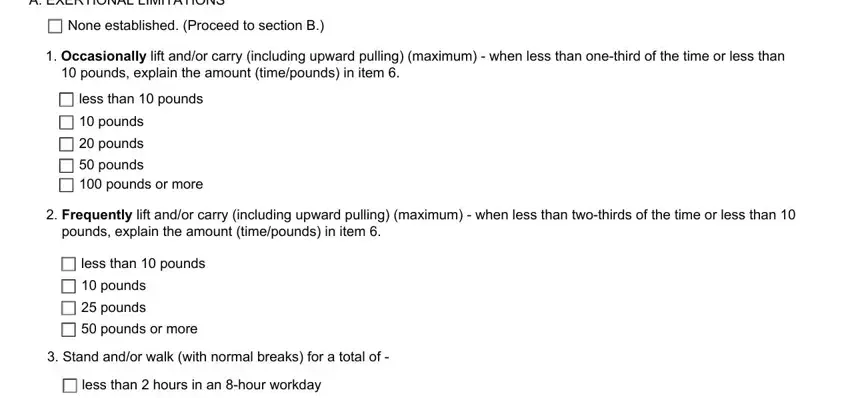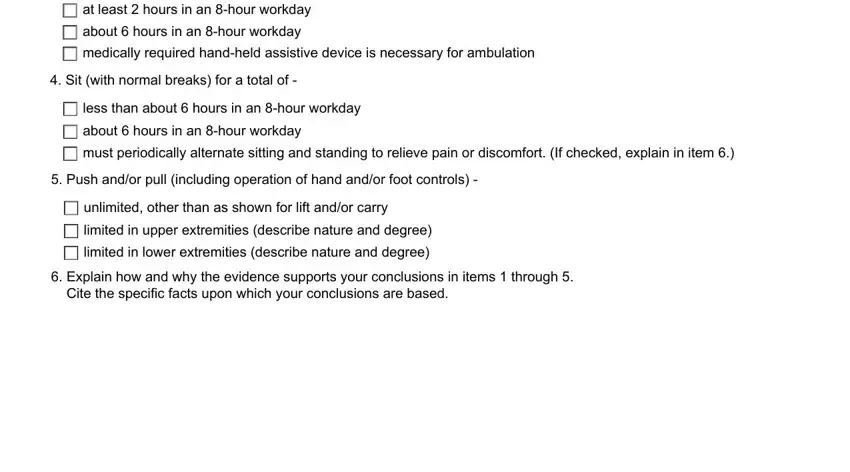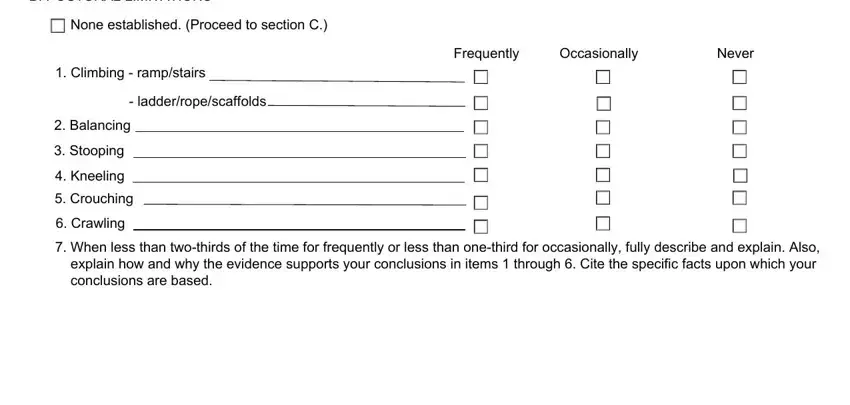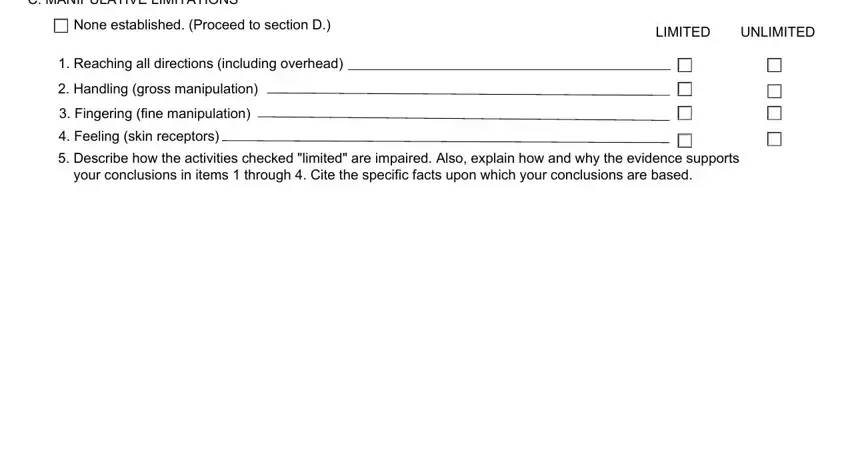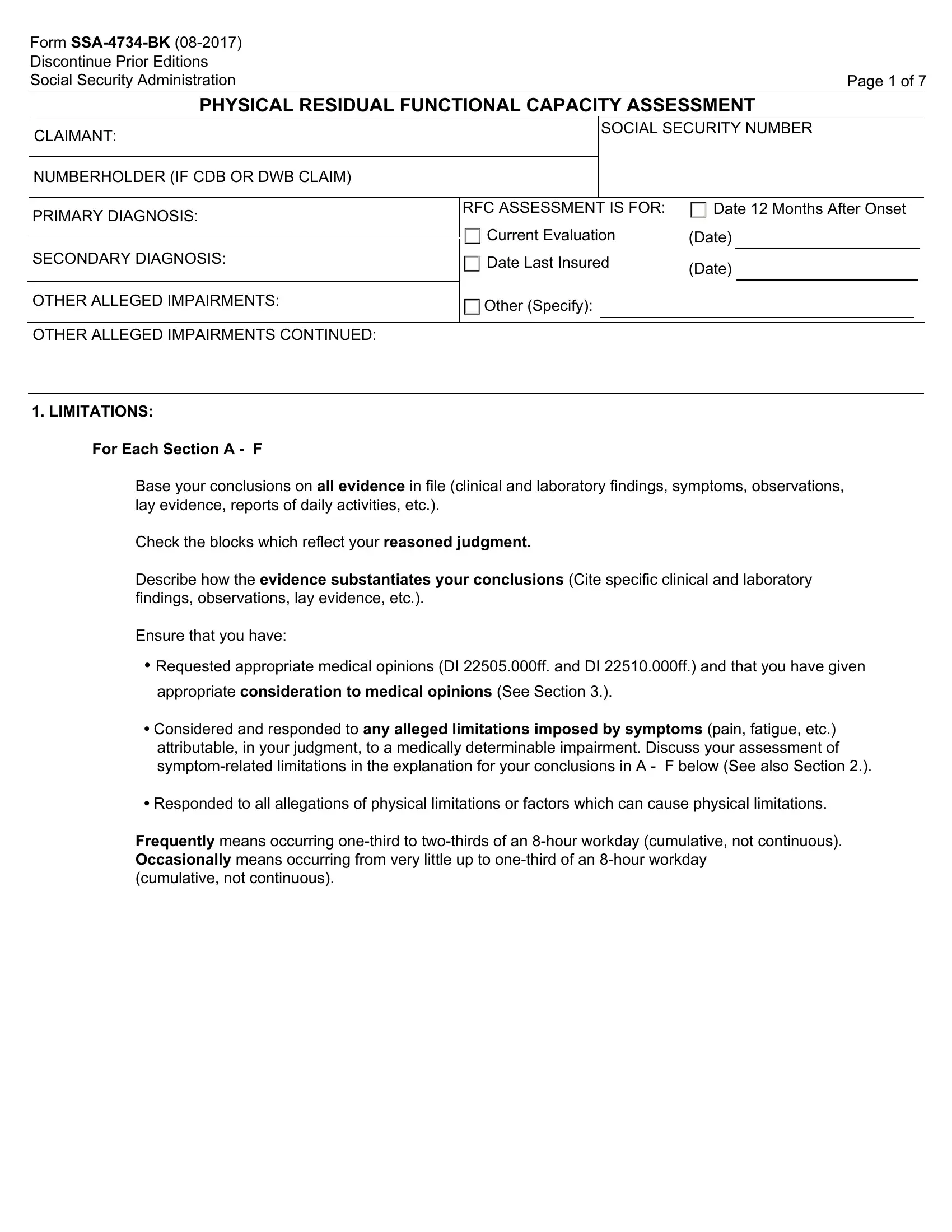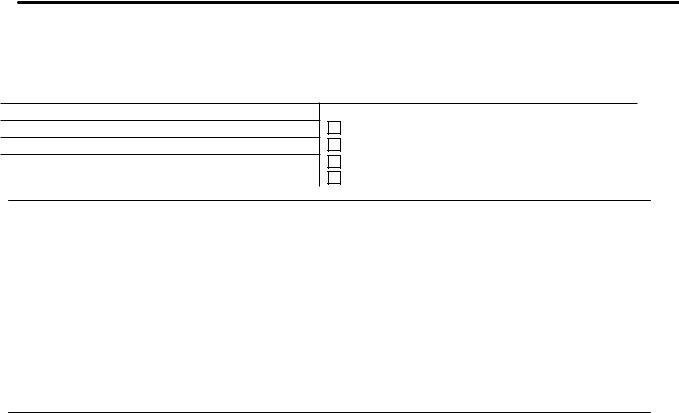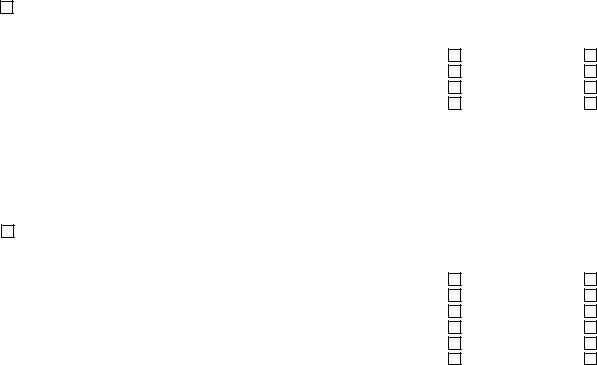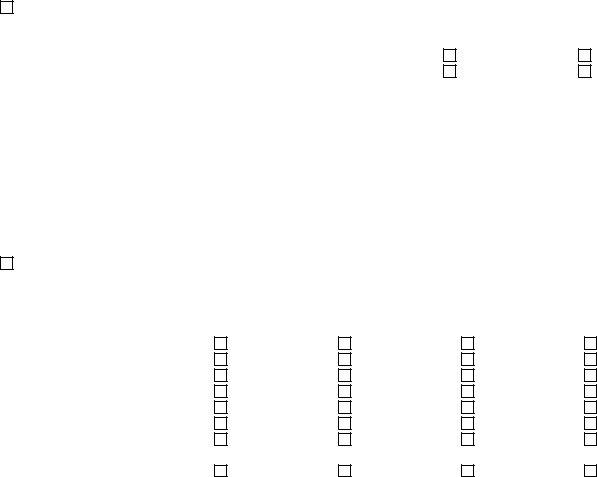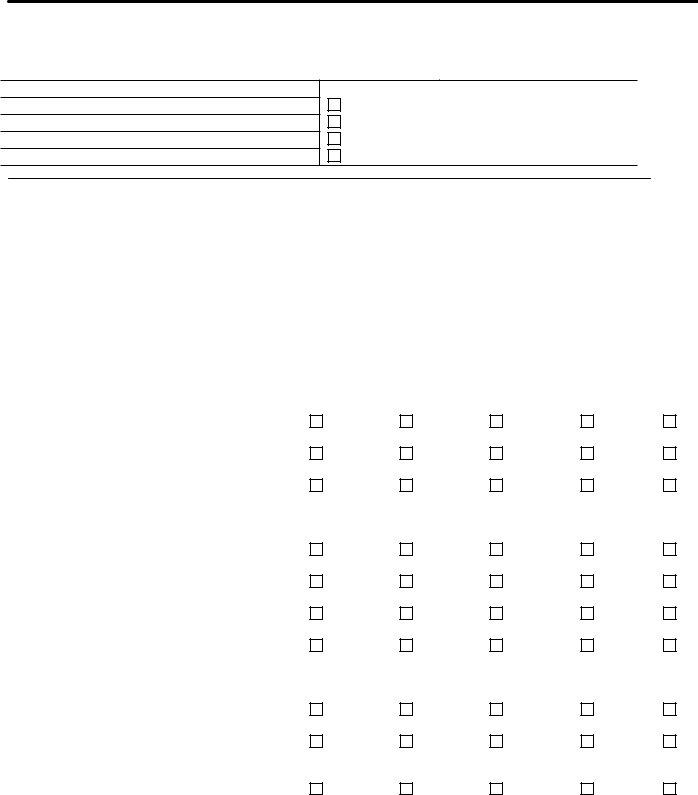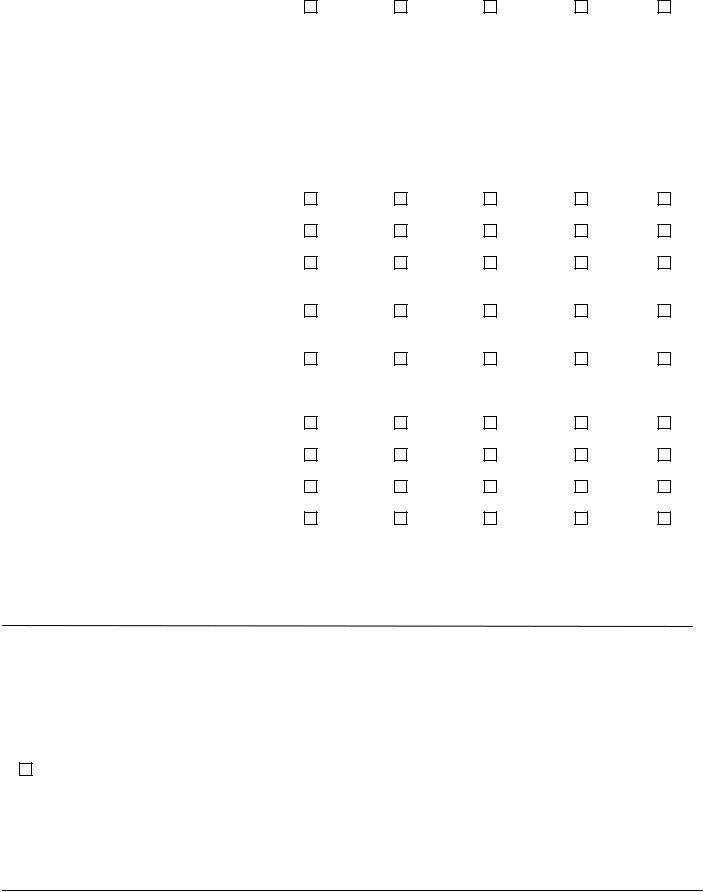Form Approved
OMB NO.0960-0431
PHYSICAL RESIDUAL FUNCTIONAL CAPACITY ASSESSMENT
Claimant:SSN:000-00-0000
Number Holder(If CDB Claim):
Primary Diagnosis:
Secondary Diagnosis:
Other Alleged Impairments:
RFC Assessment Is For:
Current Evaluation
Date Last Insured:
Date 12 Months After Onset:
Other(Specify):
PRIVACY ACT/PAPERWORK ACT NOTICE: The information requested on this form is authorized by Section 223 and Section 1633 of the Social Security Act. The information provided will be used in making a decision on this claim. Failure to complete this form may result in a delay in processing the claim Information furnished on this form may be disclosed by the Social Security Administration to another person or governmental agency on]y with respect to Social Security progrants and to comply with federal laws S requiring the exchange of information between Social Security and other agencies.
The Paperwork Reduction Act of 1995 requires us to notify you that this information collection is in accordance with the clearance requirements of section 3507 of the Paperwork Reduction Act of 1995. We may not conduct or sponsor, and you are not required to respond to, a collection of information unless it displays a valid 0MB control number.
TIME IT TAKES TO COMPLETE THIS FORM: We estimate that it will take you about 20 minutes to complete this form. This includes the time it will take to read the instructions. gather the necessary facts and fill out the form. If you have comments or suggestions on this estimate, write to the Social Security Administration, ATTN: Reports Clearance Officer. I -A-2 I Operations Bldg., Baltimore, MD 21235- 0001 Send only comments relating to our "time it takes" estimate to the office listed above All requests for Social Security cards and other claims-related information should be sent to your local Social Security office, whose address is listed under Social Security Administration in the U.S. Government section of your telephone directory.
I.LIMITATIONS:
For Each Section A - F
⇒Base your conclusions on all evidence in file (clinical and laboratory findings; symptoms; observations; lay evidence; reports of daily activities; etc.).
⇒Check the blocks which reflect your reasoned judgment.
⇒Describe how the evidence substantiates your conclusions (Cite specific clinical and laboratory findings, observations, lay evidence, etc.
⇒Ensure that you have requested:
•Appropriate treating and examining source statements regarding the individual's capacities (DI 22505.OOOff. and DI 22510.OOOff.) and that you have given appropriate weight to treating source conclusions. (See Section III.)
•Considered and responded to any alleged limitations imposed by symptoms (pain, fatigue, etc.) attributable, in
your judgment, to a medically determinable impairment. Discuss your assessment of symptom- |
related |
limitations in the explanation for your conclusions in A - F below. (See also Section II.) |
|
•Responded to all allegations of physical limitations or factors which can cause physical limitations.
⇒Frequently means occurring one-third to two-thirds of an 8-hour workday (cumulative, not continuous). Occasionally means occurring from very little up to one-third of an 8-hour workday (cumulative, not continuous).
Form SSA-4734BK (1-89) |
1 |
(Formerly SSA-4734-U8 Use prior editions) |
|
A. EXERTIONAL LIMITATIONS
None established. (Proceed to section B.)
1.Occasionally lift and/or carry (including upward pulling) (maximum)-when less than one-third of the time or less than 10 pounds, explain the amount (time/pounds) in item 6.
less than 10 pounds 10 pounds
20 pounds
50 pounds
100 pounds or more
2.Frequentlylift and/or carry (including upward pulling) (maximum)-when less than two-thirds of the time or less than 10 pounds, explain the amount (time/pounds) in item 6.
less than 10 pounds 10 pounds
25 pounds
50 pounds or more
3. Stand and/or walk (with normal breaks) for a total of:
less than 2 hours in an 8-hour workday
at least 2 hours in an 8-hour workday about 6 hours in an 8-hour workday
medically required hand-held assistive device is necessary for ambulation
4. Sit (with normal breaks) for a total of
less than about 6 hours in an 8-hour workday about 6 hours in an 8-hour workday
must periodically alternate sitting and standing to relieve pain or discomfort. (If checked, explain in 6.)
5.Push and/or pull (including operation of hand and/or foot controls)-
unlimited, other than as shown for lift and/or carry limited in upper extremities (describe nature and degree) limited in lower extremities (describe nature and degree)
6.Explain how and why the evidence supports your conclusions in item 1 through 5. Cite the specific facts upon which your conclusions are based.
Form SSA-4734BK (1-89) |
2 |
(Formerly SSA-4734-U8 Use prior editions) |
|
6. Continue (note: make additional comments in section IV)
B. POSTURAL LIMITATIONS
None established. (Proceed to section C.)
Frequently Occasionally Never
1. Climbing-ramp/stairs ladder/rope/scaffolds 2. Balancing 3. Stooping 4. Kneeling 5. Crouching 6. Crawling
7.When less than two-thirds of the time for frequently or less than one-third for occasionally, fully describe and explain. Also explain how and why the evidence supports your conclusions in items 1 through 6. Cite the specific facts upon which your conclusions are based.
Form SSA-4734BK (1-89) |
3 |
(Formerly SSA-4734-U8 Use prior editions) |
|
C. MANIPULATIVE LIMITATIONS
None established. (Proceed to section D.)
LIMITED UNLIMITED
1. Reaching all directions (including overhead)
2. Handling (gross manipulation)
3. Fingering (fine manipulation)
4. Feeling (skin receptors)
5.Describe how the activities checked "limited" are impaired. Also, explain how and why the evidence supports your conclusions in item 1 through 4. Cite the specific facts upon which your conclusions are based.
D. VISUAL LIMITATIONS
None established. (Proceed to section E.)
LIMITED UNLIMITED
1. Near acuity
2. Far acuity
3. Depth perception
4. Accommodation
5. Color vision
6. Field of vision
7.Describe how the faculties checked "limited" are impaired. Also explain how and why the evidence supports your conclusions in item 1 through 6. Cite the specific facts upon which your conclusions are based.
Form SSA-4734BK (1-89) |
4 |
(Formerly SSA-4734-U8 Use prior editions) |
|
E.COMMUNICATIVE LIMITATIONS
None established. (Proceed to section F.)
LIMITED UNLIMITED
3.Describe how the faculties checked "limited" are impaired. Also, explain how and why the evidence supports your conclusions in items 1 and 2. Cite the specific facts upon which your conclusions are based.
F. |
ENVIRONMENTAL LIMITATIONS |
|
|
|
|
None established. (Proceed to section II.) |
|
|
|
|
UNLIMITED |
AVOID |
AVOID EVEN |
AVOID ALL |
|
|
CONCENTRATED |
MODERATE |
EXPOSURE |
|
|
EXPOSURE |
EXPOSURE |
|
1. |
Extreme cold |
|
|
|
2. |
Extreme heat |
|
|
|
3. |
Wetness |
|
|
|
4. |
Humidity |
|
|
|
5. |
Noise |
|
|
|
6. |
Vibration |
|
|
|
7. |
Fumes, odors, dusts, gases, |
|
|
|
|
poor ventilation, etc. |
|
|
|
8. |
Hazards(machinery, |
|
|
|
|
heights, etc.) |
|
|
|
9.Describe how these environmental factors impair activities and identify hazards to be avoided. Also, explain how and why the evidence supports your conclusions in items 1 though 8. Cite the specific facts upon which your conclusions are based.
Form SSA-4734BK (1-89) |
5 |
(Formerly SSA-4734-U8 Use prior editions) |
|
9.Continue (note: make additional comments in section IV)
II.SYMPTOMS
For symptoms alleged by the claimant to produce physical limitations, and for which the following have not previously been addressed in section I, discuss whether:
A.The symptom(s) is attributable, in your judgment, to a medically determinable impairment.
B.The severity or duration of the symptom(s), in your judgment, is disproportionate to the expected severity or expected duration on the basis of the claimant's medically determinable impairment(s).
C.The severity of the symptom(s) and its alleged effect on function is consistent, in your judgment, with the total medical and nonmedical evidence, including statements by the claimant and others, observations regarding activities of daily living, and alterations of usual behavior or habits.
Form SSA-4734BK (1-89) |
6 |
(Formerly SSA-4734-U8 Use prior editions) |
|
III. TREATING OR EXAMINING SOURCE STATEMENT(S)
A. Is a treating or examining source statement(s) regarding the claimant's physical capacities in file? Yes
No (Includes situations in which there was no source or when the source(s) did not provide a statement regarding the claimant's physical capacities.)
B.If yes, are there treating/examining source conclusions about the claimant's limitations or restrictions which are significantly different from your findings?
Yes
No
C.If yes, explain why those conclusions are not supported by the evidence in file. (Cite the source's name and the statement date.)
IV. ADDITIONAL COMMENTS: |
|
|
These findings complete the medical portion of the disability determination. |
|
MEDICAL CONSULTANT'S SIGNATURE: |
MEDICAL CONSULTANT’S CODE: |
DATE: |
Form SSA-4734BK (1-89) |
7 |
(Formerly SSA-4734-U8 Use prior editions) |
|
Form Approved
0MB No 0960-0431
MENTAL RESIDUAL FUNCTIONAL CAPACITY ASSESSMENT
Name:SSN:000-00-0000
Categories(From 1B of the PRFT)
Assessment Is For:
Current Evaluation
Date Last Insured: / /
Date 12 Months After Onset: / /
Other(Specify):
I.SUMMARY CONCLUSIONS
This section is for recording summary conclusions derived from the evidence in file. Each mental activity is to be evaluated within the context of the individual's capacity to sustain that activity over a normal workday and workweek, on an ongoing basis. Detailed explanation of the degree of limitation for each category (A through D), as well as any other assessment information you deem appropriate, is to be recorded in Section III (Functional Capacity Assessment).
If rating category 5 is checked for any of the following items, you MUST specify in Section II the evidence that is needed to make the assessment. If you conclude that the record is so inadequately documented that no accurate functional capacity assessment can be made, indicate in Section II what development is necessary, but DO NOT COMPLETE SECTION III.
Not |
Moderately |
Markedly |
No Evidence |
Not Ratable |
Significantly |
Limited |
Limited |
of Limitation |
on |
Limited |
|
|
in this |
Available |
|
|
|
Category |
Evidence |
A.UNDERSTANDING AND MEMORY
1. The ability to remember locations and work-like procedures
2. The ability to understand and remember
very short and simple instructions
3. The ability to understand and remember detailed instructions.
B.SUSTAINED CONCENTRATION AND PERSISTENCE
4. The ability to carry out very short and simple instructions
5. The ability to carry out detailed instructions.
6. The ability to maintain attention and concentration for extended periods.
7. The ability to perform activities within a schedule, maintain regular attendance, and be punctual within customary toler- ances
8. The ability to sustain an ordinary routine without special supervision
9. The ability to work in coordination with or proximity to others without being dis- tracted by them
10. The ability to make simple work-related decisions.
1
Form SSA-4734-BK-SUP(8/85)
Formerly SSA-4734-F4-SUP1
11. The ability to complete a normal workday and workweek without interruptions from psychologically based symptoms and to perform at a consistent pace without an unreasonable number and length of rest periods.
Not |
Moderately |
Markedly |
No Evidence |
Not Ratable |
Significantly |
Limited |
Limited |
of Limitation |
on |
Limited |
|
|
in this |
Available |
|
|
|
Category |
Evidence |
C.SOCIAL INTERACTION
12. The ability to interact appropriately with the general public
13. The ability to ask simple questions or request assistance
14. The ability to accept instructions and re- spond appropriately to criticism from supervisors
15. The ability to get along with coworkers or
peers without distracting them or ex- hibiting behavioral extremes.
16. The ability to maintain socially appropri- ate behavior and to adhere to basic standards of neatness and cleanliness.
D.ADAPTATION
17. The ability to respond appropriately to changes in the work setting.
18. The ability to be aware of normal hazards and take appropriate precautions
19. The ability to travel in unfamiliar places or use public transportation.
20. The ability to set realistic goals or make plans independently of others
II.REMARKS: If you checked box 5 for any of the preceding items or if any other documentation deficiencies were identified, you MUST specify what additional documentation is needed. Cite the item number(s), as well as any other specific deficiency, and indicate the development to be undertaken.
III.FUNCTIONAL CAPACITY ASSESSMENT
Record in this section the elaborations on the preceding capacities. Complete this section ONLY after the SUMMARY CONCLUSIONS section has been completed. Explain your summary conclusions in narrative form. Include any information which clarifies limitation or function. Be especially careful to explain conclusions that differ from those of treating medical sources or from the individual's allegations.
These findings complete the medical portion of the disability determination.
MEDICAL CONSULTANT'S SIGNATURE |
DATE |
Paperwork/Privacy Act Notice: The information requested on this form is authorized by Section 223 and Section 1633 of the Social Security Act. The information provided will be used in making a decision on this claim. Failure to complete this form
2
Form SSA-4734-BK-SUP(8/85)
Formerly SSA-4734-F4-SUP2
